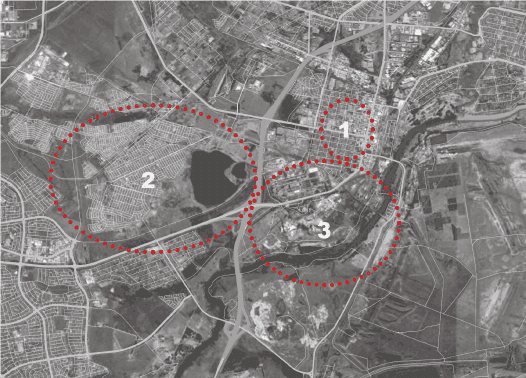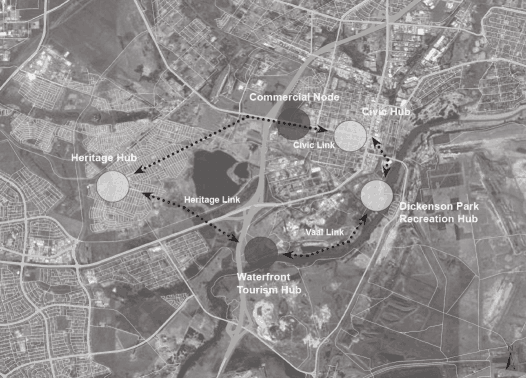The Vaal 21 initiative will be driven through a series of flagship projects which individually and collectively aim to:
- Enable development e.g. a new regional sewer works, an air quality management plan and enabling upstream and downstream manufacturing in the mineral and energy sector;
- Accelerate growth e.g. new Heineken brewery, upgrading the R57, upgrading the airfields in Parys and Kroonstad;
- Promote urban renewal e.g. Sharpeville heritage, sports and recreation precincts, Evaton Renewal, and beautification of various townships as well as CBD renewal;
- Promote tourism and leisure e.g. Development of an urban waterfront (Vereeniging & Sasolburg), Vaal Dam and Vredefort Dome developments; and
- Some of the flagship projects are already being undertaken, others are in planning and some are proposed. Some are the responsibility of local government, others of partnership between different spheres of government and others are private sector projects. The list is not a cast in stone, but can be added on from time to time.
Proposed Urban Framework
On the basis of the framework mandate, its various consultation and investigations, the three precinct projects listed and pictured below were identified and included in the IDP (Heritage, Civic, and Waterfront):
Map - Zones of development showing 3 precincts:

Regeneration of Civic Precinct in Vereeniging CBD;
Development of three interrelated precinct spaces in Sharpeville, namely:
- Heritage precinct in vicinity of Sharpeville Monument;
- Sport and recreation precinct in vicinity of George Thabe Stadium; and
- Recreation precinct along shores of Sharpeville or Kwa-Dhlomo dam.
Development of four related waterfront projects along the Vaal River in the vicinity of Vereeniging namely:
- Upgrading Dickenson Park;
- Development of Business Park to the immediate left of Dickenson Park;
- Development of iconic water tourism hub left of R59 Bridge; and
- Development of broad walk stretching to both sides of the River between Riviera Hotel and R59 Bridge.
Map - Linkages between precints

The IDP document identifies important linkages between these precincts so that they not only contribute individually but also collectively to urban regeneration, building sustainable communities and overcoming the legacies of apartheid planning to, contribute towards building a single city facing the river. According to the approved framework, all the precinct projects are planned to be sustainable. Three reasons as listed below.
Firstly, it will :
- Contribute to redressing the legacy of apartheid. They will be catalysed to overcome apartheid settlement patterns and will contribute to provide redress to communities who suffered from the brunt of apartheid exploitation and repression in the struggle for freedom in South Africa;
- Contribute to achieving the political mandate of the Council in particular in relation to job creation, development and the building of sustainable communities;
- Be people-centered: enable people to have free and open access to all amenities as well as being “organic”, relating to local experiences and history; and
- Contribute to the successes of the Sedibeng 2010 strategy and leaving behind a lasting legacy.
Secondly, it will be:
- Economically sustainable, not becoming a “white elephant” but instead being able to contribute to the economic development of the area;
- Institutionally sustainable, not creating obligations on local government which does not have the capacity to deliver or which will require local government to devote a disproportionate amount of resources to; and
- Environmentally sustainable, promoting the reuse and recycling of existing resources (e.g. grey water) using renewal resources (e.g. solar energy) where possible and embracing environmentally friendly design principles (e.g. maximising the use of natural light).
Thirdly, it is:
- Visionary: They aim to have iconic and memorable features for local residents to have pride in for visitors to want to experience;
- Fundable: They are not overly ambitious and are designed to attract public and private funds; and
- Phaseable: Some may not be able to be completed in one phase but will be designed so that they can be completed and/enhances sequentially.





